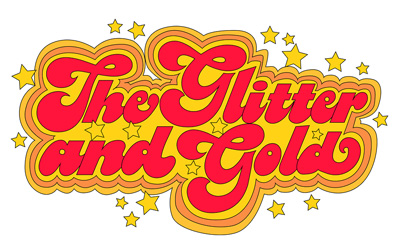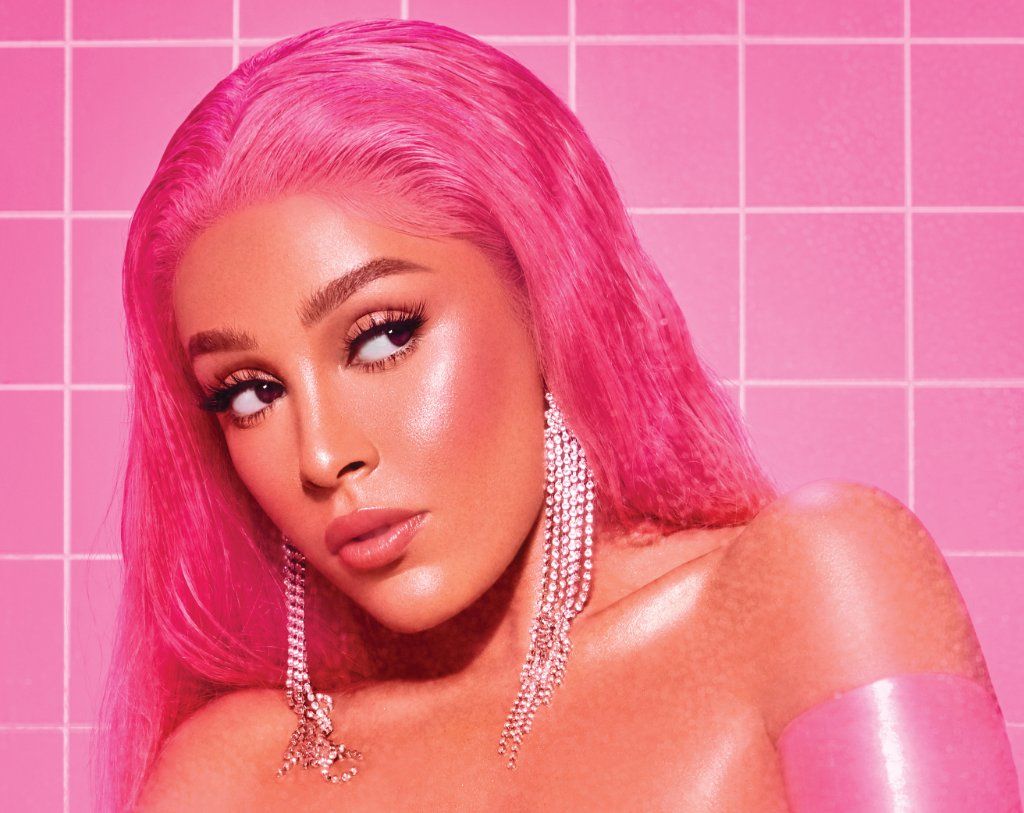Personal style blogs arrived in the early 2000s. One of the first was The Budget Fashionista. Founder Kathyrn Finney was a trailblazer. Inventing the term ‘Cheap Chic’, she quickly became celebrated for her down-to-earth saving and styling tips.
The first influencers were real
Today many complain when Emma Chamberlain attends Paris Fashion Week. Or Addison Rae gets an invite to the Met Gala. Little do they know the trend began in 2008 when Finney became the first blogger to attend New York Fashion Week.
Not only did Finney attend, she even hosted her own event. One dedicated to celebrating the five-year anniversary of her wildly popular blog. “My goal was to create a fun, fabulous Fashion Week party,” she said, “that celebrates REAL women with REAL budgets.”
The influencer democratized culture
Finney’s words exemplify what it meant to be an influencer in the early days of the internet. Audiences were not simply looking for figures they could aspire to be. Turned off by mainstream media celebrities such as Paris Hilton and Britney Spears, many were searching for people who had lives they could actually emulate.
Dr. Natascha Radclyffe-Thomas teaches at The British School of Fashion. “The advent of social media democratized fashion in several ways,” she says. “Including access to content creation and who gets to be a fashion critic. The early fashion bloggers provided that fashion-outsider-but-expert voice.”
Instagram changed everything
Finney’s impact led to a boom in fashion blogs. Over the next few years, thousands of influential style gurus emerged online. Blogs such as Rookie, founded by 13-year-old Tavi Gevinson, and The Sartorialist documented regular people’s style on the streets of New York.
Many of these bloggers were ready and willing to embrace a rapidly changing media landscape. And of all the social networking platforms users were flocking to in the millions, none had as big an impact on influencing as Instagram. Debuting in 2010, Instagram’s ‘follower’ model and image-led format meant that influencers’ content was more engaging than ever before.
The platform became a hub for creative self-expression. Here, users could build communities built around niche interests and cultures. They created real connections with others around the world.
The early influencer rejected media stereotypes
Content on Instagram was a far cry from the perfectly polished, almost exclusively white-skinned-and-thin, representations of people seen in popular media. One of the defining movements of the 2010s was body positivity. On Instagram women with plus-size figures such as Tess Holiday and Ashley Graham were embraced.
And due to their authenticity creators became trusted by their followers. Especially when it came to recommendations about what to buy. “As their followers grew,” Dr. Thomas reflects. “So did their potential for influence. And as fashion is such a visual medium, people came to identify with the look and style of fashion bloggers. Which gave them more influence with fashion brands who came to collaborate with them.”
This uniquely intimate relationship between influencers and followers soon became hard to ignore for businesses and brands. Large corporations began reaching out to popular influencers and sponsoring posts promoting their products. By 2015, there were 190 different influencer marketing agencies operating across the world. That number had jumped to 420 by 2017. Then over 1,300 in 2021. When it came to the industry of influencer marketing there was money to be made.

Top influencer Addison Rae poses for a Sephora beauty product campaign
Then they sold out
Not only by brands but creators themselves. One 2021 report states top influencers can make up to $1.5 million for a single post. (A recent Pet Influencer Rich List reveals even dogs and cats are now paid as much as $20,000.) TikTok’s Addison Rae earned $5 million in 2021 alone. Charli D’amelio $4 million.
Such influencers are a far cry from early fashion bloggers such as Kathyrn Finney. Dressing in Gucci and Dior many flaunt luxurious lifestyles. With days filled with personal trainers and glamorous penthouse apartments, today’s influencers could not be further from relatable. They have become the very thing their earlier counterparts reacted against. Audiences, however, are pushing back.
What makes an influencer unrelatable?
For many, these overproduced and oversaturated personalities are no less appealing than Britney Spears or Paris Hilton were to early fashion bloggers. Members of Gen Z especially are leaning towards individuality and the unique use of platforms such as TikTok. They are moving away from the cultural monolith the modern influencer has become.
Audiences and content creators alike are challenging the soulless palatability many influencers pursue in order to secure brand deals for sponsored content. Today, creators who are gaining the most traction are those talking about the social issues they and their followers find most important.
One example is Peach PRC. With more than 1.5 million followers, this hugely popular TikTok personality rose to fame as a result of her statements about mental health, substance abuse, and sex work. Her willingness to talk about uncomfortable or otherwise rarely discussed topics on a public platform has boosted her from micro to mainstream influencer.
Despite her growing profile Peach PRC has continued to maintain a meaningful relationship with her followers. She is also known for her bright pink hair and excessive use of glitter. A far cry from the tightly controlled public image and minimalist fashion of mega-influencers.

Peach PRC
Modern influencing is in a state of flux
Niki Bruce is a lecturer at The Australian College of the Arts. Her view is that the influencer ecosystem is rapidly changing. “ The current influencer culture is in a state of flux,” she shares. “The rise of TikTok, the failure of celebrities to be transparent, the coming of age of the next generation, all means that the definition of an ‘influencer’ is changing.”
“The ‘culture’ of the influencer,” she continues, “particularly on Instagram, is now much more commodified than it used to be. It is very generic and codified. And almost all aspiring ‘influencers’ are working to a set of blueprints on how to become popular, get the numbers, and make money.”
Many teens are shifting away from Instagram to apps like TikTok, Discord and Twitch. As they do, the old tried-and-true formulas for influencer success are proving ineffective. Take popular wellness blogger and “Instagram Mum” Chloe Szep for example. In September 2021 she lost more than 32,000 followers after sharing stories and posts against coronavirus lockdown rules and vaccines.
Why teens are rejecting traditional influencers
Niki Bruce expresses no surprise. “Influencers used to actually have ‘influence’” she says. “They had a particular aesthetic or point of view about the world that people were interested in learning about or appreciating… Now they all look the same. The same hair, clothes, makeup, couches, dogs, babies. It is all down to the impact of advertising and marketing. Once big money was introduced to the social media space, everyone started looking at R.O.I., numbers and ‘results’.”
With four out of five young people agreeing online celebrities have more influence than famous actors, many established social media personalities face increasing scrutiny. Accounts such as @aussieinfluenceropinions and outspoken influencers such as Abbie Chatfield have dedicated themselves to promoting factual information around vaccines and calling out others who do not.
“Teens are a lot more aware of the downfalls of being on social media,” Niki Bruce notes. “They are more interested in relating to their ‘real’ friends rather than just with people online. But they are also easily hooked on micro-trends like TikTok dances.”
Influencing returns to its roots
Audiences are moving away from the perfectly curated feeds of the rich and privileged. Instead, they turn to those whose lives more closely resemble their own. This shift calls back to a simpler time in social media, before content houses and SugarBearHair. In the same spirit of The Budget Fashionista, many younger influencers use their platforms to promote honesty, realism and creative self-expression. Not profit-seeking or celebrity status.
With the influencer marketing industry set to grow to $15 billion in 2022, the greedy and ambitious influencer is not at risk of fading away anytime soon. But the landscape is certainly changing. A new generation of micro-influencers now questions the authenticity of social media megastars.
Who, more and more, regress to shallow mass media stereotypes. Fearlessly, many champions the individual and every day over the calculating and insincere. The battle between real and fake continues.










